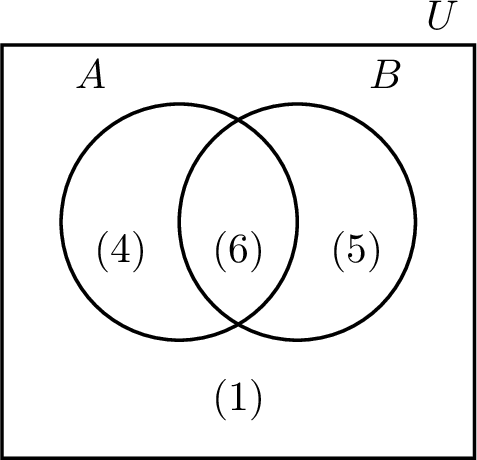Set Theory
Set
Definition Set
A set is a collection of objects, called elements.
We list its elements between curly brackets.
We list its elements between curly brackets.
Example
List all possible results when rolling a standard die 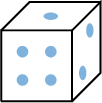 .
.
\(E=\{1,2,3,4,5,6\}=\{\) ,
,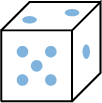 ,
,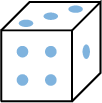 ,
,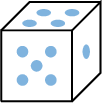 ,
,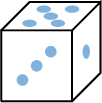 ,
,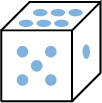 \(\}\).
\(\}\).
Definition Element
- An element is an object contained in a set.
- \(\in\) means "is an element of" or "belongs to".
- \(\notin\) means "is not an element of" or "does not belong to".
Example
\(2\in \{1,2,3,4,5,6\}\) and \(7\notin \{1,2,3,4,5,6\}\).
Definition Equal sets
Two sets are equal if they have exactly the same elements.
Example
Determine if the sets \(\{2,6,4\}\) and \(\{2,4,6\}\) are equal.
Yes, the sets \(\{2,6,4\}\) and \(\{2,4,6\}\) are equal because they contain the same elements: \(2\), \(4\), and \(6\).
Example
Determine if the sets \(\{1,2,3\}\) and \(\{1,2,4\}\) are equal.
No, the sets \(\{1,2,3\}\) and \(\{1,2,4\}\) are not equal because element \(3\) belongs to \(\{1,2,3\}\) but not to \(\{1,2,4\}\).
Definition Empty Set
The empty set is a set with no elements. It is written as \(\{\}\) or \(\emptyset\).
Ordered Pair
Definition Ordered Pair
An ordered pair, denoted \((a, b)\) or \(ab\), is a pair of objects in which their order is significant. The ordered pair \((a, b)\) is different from the ordered pair \((b, a)\) unless \(a = b\).
Example
In a sprint relay race, two runners are paired up. Let \(L\) be Louis and \(H\) be Hugo. The ordered pair \((L, H)\) means Louis runs first, then passes the baton to Hugo. The ordered pair \((H, L)\) means Hugo runs first, then passes to Louis. These are different races.
Subsets
Definition Subset
A set \(A\) is a subset of a set \(B\) if every element in \(A\) is also in \(B\). We write this as \(A \subseteq B\).
Example
Is \(A \subseteq B\) when \(A = \{2, 4, 6\}\) and \(B = \{1, 2, 3, 4, 5, 6\}\)?
Check each element: 2, 4, and 6 from \(A\) are all in \(B = \{1, 2, 3, 4, 5, 6\}\). Since every element of \(A\) is in \(B\), \(A \subseteq B\).
Intersection and Union
Definition Intersection
The intersection of two sets \(A\) and \(B\), written \(A \cap B\), is the set of elements that are in both \(A\) and \(B\).
Example
What is the intersection \(\{1, 2, 3\} \cap \{2, 3, 4\}\)?
For the intersection \(\cap\), include all common element: \(\textcolor{colorprop}{2}\) \(\textcolor{olive}{3}\). Donc $$\{\textcolor{colordef}{1}, \textcolor{colorprop}{2}, \textcolor{olive}{3}\} \cap \{ \textcolor{colorprop}{2}, \textcolor{olive}{3},\textcolor{brown}{4}\} = \{\textcolor{colorprop}{2},\textcolor{olive}{3}\}$$
Definition Union
The union of two sets \(A\) and \(B\), written \(A \cup B\), is the set of all elements in \(A\) or \(B\) (or both).
Example
What is the union \(\{1, 2, 3\} \cup \{2, 3, 4\}\)?
For the union \(\cup\), include all elements from both sets without repeats: \(\textcolor{colordef}{1}, \textcolor{colorprop}{2}, \textcolor{olive}{3},\textcolor{brown}{4}\). So, $$\{\textcolor{colordef}{1}, \textcolor{colorprop}{2}, \textcolor{olive}{3}\} \cup \{ \textcolor{colorprop}{2}, \textcolor{olive}{3},\textcolor{brown}{4}\} = \{\textcolor{colordef}{1}, \textcolor{colorprop}{2}, \textcolor{olive}{3},\textcolor{brown}{4}\}$$
Cardinality
Definition Cardinality
\(\Card{A}\) denotes the number of elements in the set \(A\).
Example
\(\Card{\{1,2,3,4,5,6\}}=6=\) 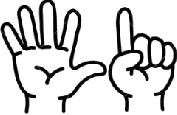

Complement
Definition Universal set
A universal set is the set of all elements considered.
Definition Complement
The complement of a set \(A\), denoted \(A'\), consists of all elements in \(U\) that are not in \(A\). Sets \(A\) and \(A'\) are said to be complementary.
Example
Given the universe \(U = \{1, 2, 3, 4, 5, 6\}\) and the set \(A = \{1, 3, 5\}\), find the complement \(A'\).
Start with the universe \(U = \{1, 2, 3, 4, 5, 6\}\).
The set \(A = \{1, 3, 5\}\) includes 1, 3, and 5.
The complement \(A'\) is all the elements in \(U\) that are not in \(A\):
$$A' = \{2, 4, 6\}$$
The set \(A = \{1, 3, 5\}\) includes 1, 3, and 5.
The complement \(A'\) is all the elements in \(U\) that are not in \(A\):
$$A' = \{2, 4, 6\}$$
Venn Diagrams
Definition Venn Diagram
A Venn diagram uses a rectangle to show the universal set \(U\) and circles to represent other sets within it.
Example
Here’s a Venn diagram for \(U = \{1, 2, 3, 4, 5, 6\}\) and \(A = \{1, 3, 5\}\):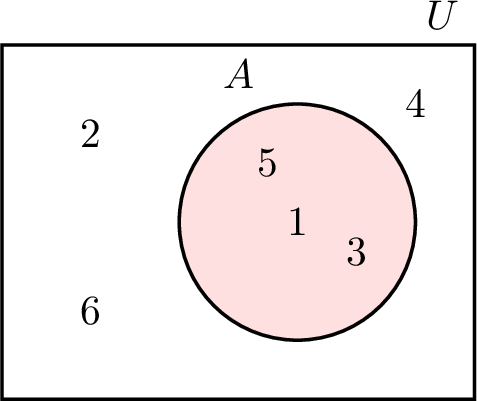

Definition Key Venn Diagram Concepts
This table shows common set operations and their Venn diagrams:
| Notation | Meaning | Venn Diagram |
| \(A\) | Set \(A\) | 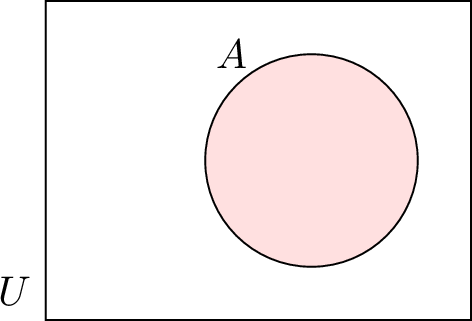 |
| \(A'\) | Complement of \(A\) (everything in \(U\) not in \(A\)) | 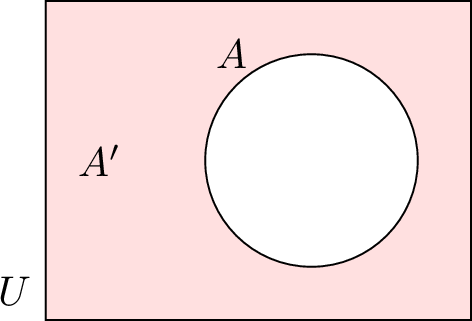 |
| \(A \subseteq B\) | \(A\) is a subset of \(B\) | 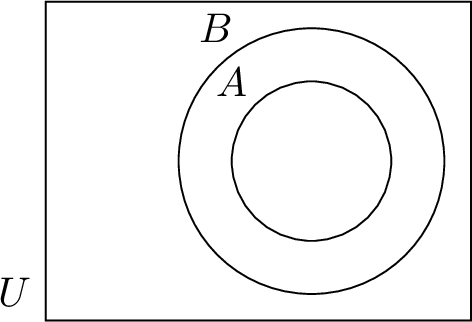 |
| \(A \cup B\) | Union of \(A\) and \(B\) (all elements in \(A\) or \(B\)) | 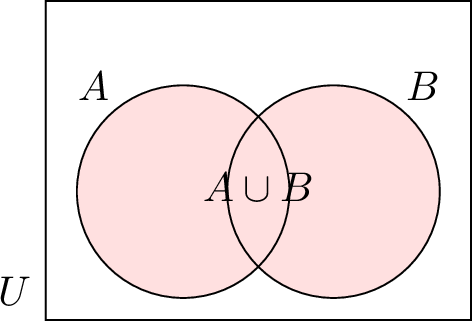 |
| \(A \cap B\) | Intersection of \(A\) and \(B\) (elements in both) | 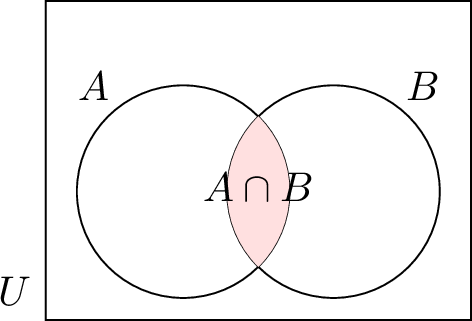 |
| \(A \cap B = \{\}\) | \(A\) and \(B\) are disjoint (no common elements) | 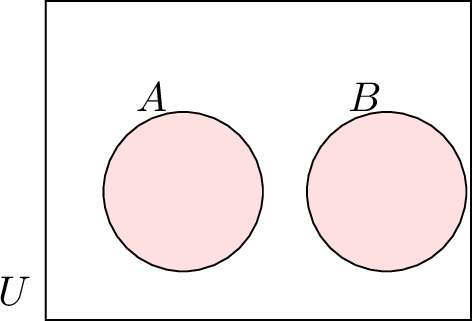 |
Venn diagrams help solve problems by showing the number of elements in each region.
Definition Counting Elements
In a Venn diagram, we use brackets around numbers to show how many elements are in each region.
Example
Consider this Venn diagram: